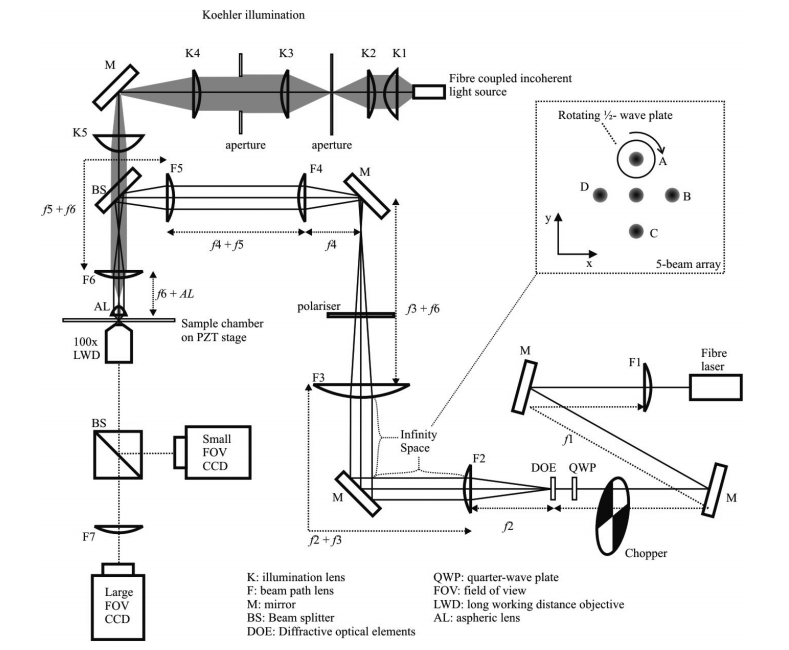At Illinois Wesleyan University I began researching holographic optical tweezers under the direction of Dr. Gabe Spalding . The basis for optical tweezers is that as the light passes through a dielectric sphere (or a cell) it has a net change in momentum. Although minuscule, this momentum change in the light imparts and equal and opposite momentum change on the sphere, and as a result you generate force to form a “tractor beam”. Our lab both used optical tweezers as a tool for biology research, but also did research on the actual physics of photonics and potential new optical micromanipulation applications.
Laser Sorting

In this technique, a laser is split and multiple beams recombined form a three dimensional interference pattern (lattice) in the sample. A variety of parameters of the lattice can be tailored
to fit the needs of a particular application by simply changing the optical properties upstream in the system. It has been shown that cells in a fluid suspension, such as blood, can be differentiated and routed in particular directions based on their optical properties (e.g. size, shape, polarizability). For example, erythrocytes can be separated from lymphocytes based on their size. The optics for the lattice along with the lattice angle are tailored such that as the blood flows through the optical field the erythrocytes experience a lateral force while the lymphocytes are unaffected by the field. Currently the most popular technique for blood sorting relies on centrifugation, which is inefficient and has the potential to damage cells. Our non-invasive optical technique alleviates the stresses to cells associated with centrifugation while allowing for high throughput (extrapolating to 3D ~100,000 cells/minute). In addition, current studies show promise for optical differentiation of other cell types such as metastatic cancer cells from normal cells.
We tried a novel approach to sorting dealt with the problem that when using a 3D optical lattice with high throughput, jamming in the lattice can occur. In an effort to combat this limitation, we made the lattices dynamic, in which each trap was moving to sweep particles to one side. In one application we utilized the Angular Doppler effect to constantly change the polarization of one if the interfering beams in order to make the lattice translate. In another example, we pulsed the lattice to achieve a cell ratcheting effect. In both methods, we were able to increase the efficient throughput of particles and reduce the nearest neighbor spacing, thus reducing jamming.
Optical Binding
In this study, we observed the binding phenomenon of two particles optically bound in a counterpropagating fiber trap. The position of one particle remotely affects the position of the other, with high correlation:
Bessel Beam Propagation
Bessel beams are propagation invariant light fields. It has very recently been shown that they may be created with temporally incoherent (white) light. Such fields may have applications in low coherence interferometric imaging for biomedicine and optical micromanipulation. In collaboration with others at University of St. Andrews, we showed the wavelength dependence of propagation for white light bessel beams:
